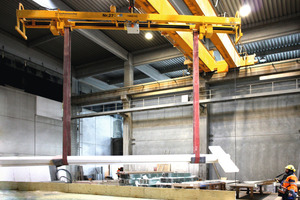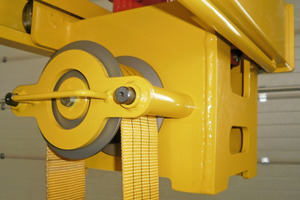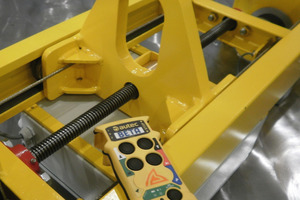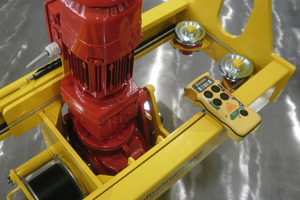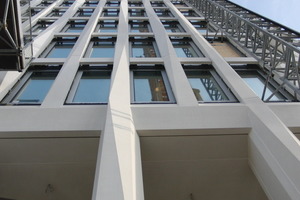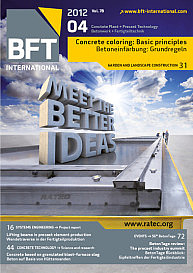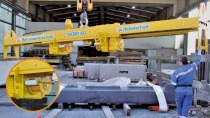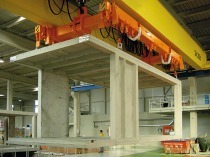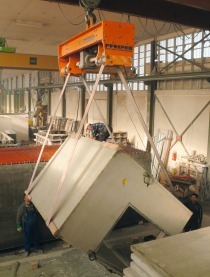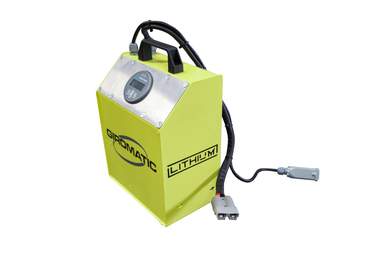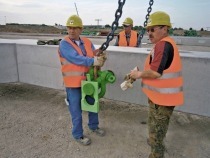BETA lifting/turning beams
in precast element production
BETA Maschinenbau GmbH has developed a solution well-suited to turning heavy, bulky precast elements. The BETA lifting/turning beam pays off shortly after installation not only in the manufacturing process but also during loading and unloading.
The remote control system enables the safe operation of the beam by a single worker. In addition, the operator can safely change his position during lifting and turning, thus being able to monitor the process and to stop it in any position if and when required. A turning angle of up to 360° provides for safe, accident-free work in the manufacturing process or during loading and unloading. The smooth turning process prevents damage to expensive equipment or precast elements.
Flexibility
The nine different standard beams offered cover a gripping width range from 1,000 to 6,000 mm; they provide solutions for any area of application. The TW 20/1,5-6 BETA lifting beam is suitable for turning loads of up to 20,000 kg. Smooth-running bridge trolleys (Fig. 2) ensure that gripping widths are continuously adjustable, thus providing a sufficient degree of flexibility in the process because varying loads can be lifted and turned. Lifting belts are positioned symmetrically in relation to the center eye, which means that the working width is adjusted synchronously in inward or outward direction. For load balancing purposes, the center eye can be shifted using an electric motor (Fig. 3). This feature eliminates the need for manual alignment with the load center, which makes work much easier and results in tremendous time savings, especially when handling large elements. The belt reels are automatically positioned above the attachment points; the reels are driven by electric motors (Fig. 4). Power is supplied either from the crane or from the factory floor. It has become good practice to fit the continuous belts with edge protection for the handling of loads with sharp edges.
Dreßler Bau GmbH
During its latest project, the precast plant operated by Dreßler in Stockstadt/Main teamed up with Beta as a competitive partner offering innovative internal logistics solutions. The production facility located near Aschaffenburg has been part of the nearly 100-year-old family-owned business for almost 40 years. Its precast element portfolio comprises both structural precast components, such as prestressed girders, purlins and TT floor slabs, and elements consisting of unstressed concrete, such as joists, columns with attached foundations and support girders. The product range is complemented by precast vehicle or rail weighbridges approved for calibration. The precast plant is also a well-established producer of architectural concrete elements for refined facade designs. Be it curtain facades or sandwich walls − Dreßler impressively demonstrates that the gray and dull anonymity of concrete has long become a thing of the past. Gray or white cement is used to meet the aesthetic requirements specified by architects, and colored if required.
The visual appeal of the architectural concrete elements essentially relies on their surface finish. By acid washing, blasting or grinding, the elements are given a unique expression that lends a vivid yet noble appearance to the concrete. Moreover, customized surface textures can be achieved by form liners.
The wide variety of surface finishing methods is matched with an exemplary degree of accuracy in the production process. One of the project examples that received worldwide attention is the reconstruction of the Neues Museum in Berlin on the basis of the design by architect David Chipperfield. Again, the appearance of the architectural concrete elements is most appealing as a result of utmost care and precision.
The increasingly wide array of architectural concrete applications goes hand in hand with the ever-greater challenges in facade design. This also holds true for the latest Dreßler project, the multi-story building currently being constructed for Total (Fig. 5). This 70 m high office building has 17 stories; it is the first of a series of new buildings to be constructed as part of the Eurocity development in Berlin, which is to act as a link to the Berlin Main Station (“Hauptbahnhof”). The grid facade extending over 7,500 square meters is composed of 1,395 sharp-edged, vertically “folded” white concrete elements whose surfaces reveal an alternating angular pattern. The element surface was acid-washed.
The production process required both compliance with demanding quality specifications and, even more importantly, the efficient handling of internal logistics. Each day, up to 30 elements needed to be turned by 180 degrees about their longitudinal axis for surface finishing purposes. This was a complex task due to the rather asymmetrical, slender shapes of the elements. Following a series of tests using a model, it soon became clear that previously applied methods were not suitable; new solutions were required for lifting and turning the elements. Key criteria included a safer and faster turning process avoiding any damage to the element whilst ensuring load-bearing capacities in excess of 2 tonnes and a gripping width of 8 meters, as well as single-operator control. An effective solution was developed after a series of tests using the demonstration unit.
Effective turning process
The Beta lifting/turning beam provides a solution to the identified problems. Key benefits include its continuously adjustable gripping width, automatic load balancing and high turning speed. In addition, only one employee is required to ensure the safe turning of elements. The associated remote control unit makes the operation of the beam convincingly simple. The available customized belt lengths and buckles extend the range of possible applications in the case of varying element dimensions. As a result, the use of the beam did not only enable the turning of elements for the Total building without any damage but also made it possible to reduce the time required for the entire process to about one fifth, i.e. by 80%.

